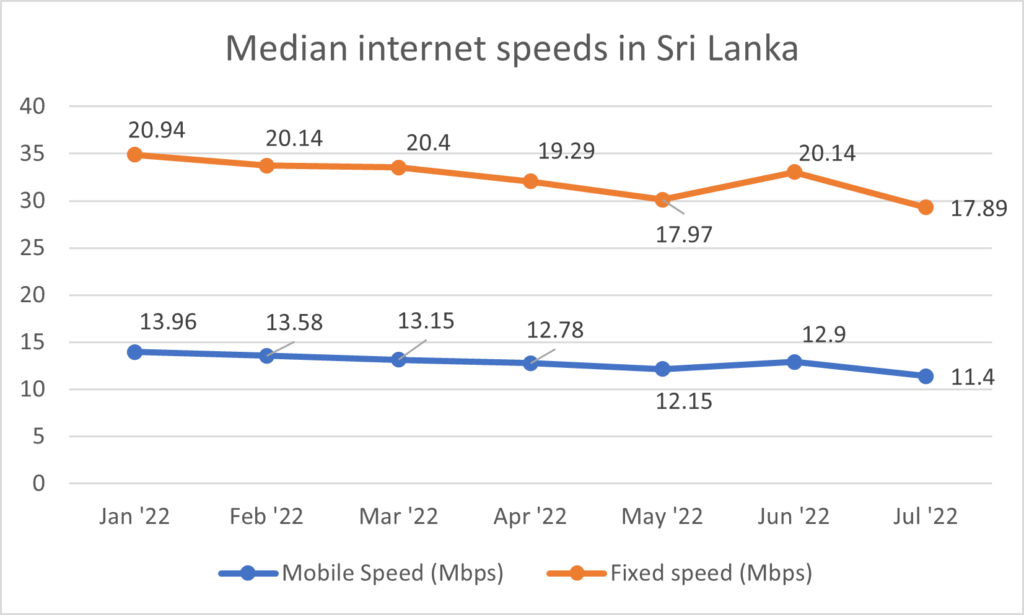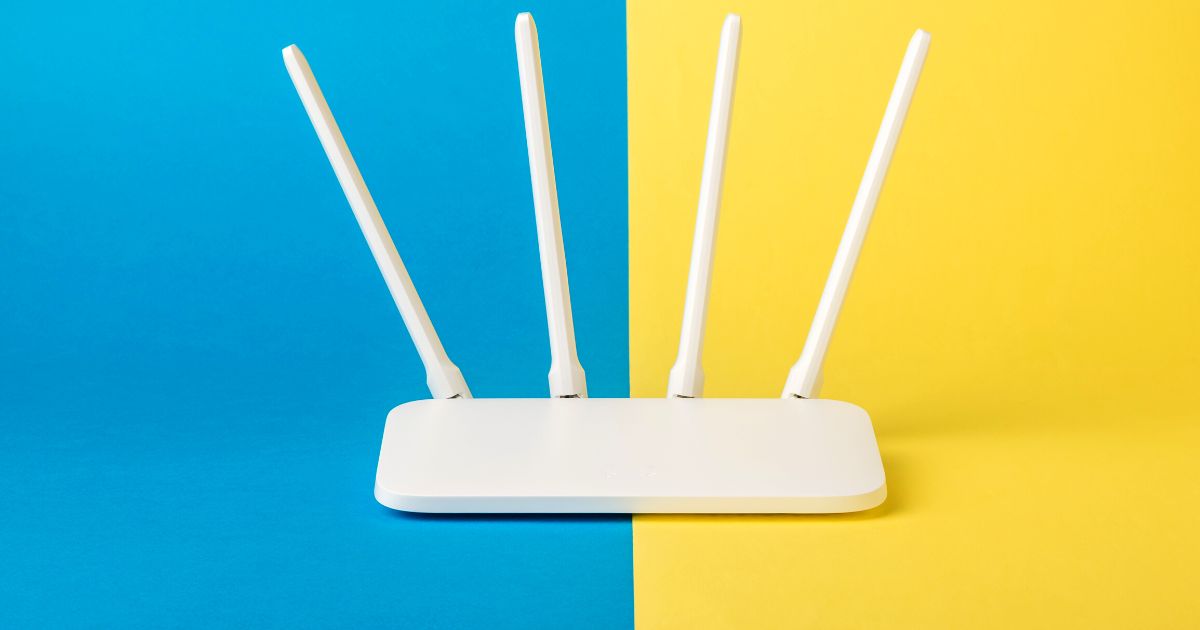As the internet continues to grow in its ambitions, so does its need for better standards and infrastructure. This is one of the reasons why generational standards like 5G and WiFi 7 are in the regular conversation now. But as the world prepares for an internet upgrade, where does Sri Lanka stand in the digital space? Here’s a look at the current state of Sri Lankan internet.
According to TRCSL data, as of June 2022, Sri Lanka accounts for 19.432 million mobile broadband subscriptions (3G and 4G) and about 3.083 million fixed broadband subscriptions. That’s 21.2% more mobile broadband subscriptions and 30.7% more fixed broadband connections compared to last year. This doesn’t exactly translate to more than 19 million citizens being online on the regular, as having a 3G/4G capable connection is not the same as being a regular internet user. However, the growth does point to the country’s potential in offering better internet accessibility to Sri Lankans.
So what does Lankan internet usage actually look like? As per the “We Are Social” digital 2022 report for Sri Lanka, the country recorded 11.34 million internet users by January 2022 and an internet penetration rate of 52.6%. This means the number of internet users jumped up by 528,000, though at a slower rate compared to last year’s 800,000. But that also means over 10 million Sri Lankans didn’t, or rather couldn’t use the internet beginning in 2022.
However, the Department of Census and Statistics data skews internet usage numbers even further. According to its 2021 annual report, 44.5% of the population (aged 5 to 69) used the internet at least once during the year. Out of this, over 77% accessed the internet via smartphones.
The state of social media
Like many other regions of the world, social media is often the catalyst for more citizens to go online and it remains to be true even today. By January 2022, an estimated 300,000 joined social media tallying up the total number to around 8.20 million social media users.
Facebook reports that about 7.15 million Sri Lankans can be reached via ads on its platform, followed by a 6.68 million audience on YouTube, 1.55 million on Instagram, 1.5 million on LinkedIn, and 296.7 thousand on Twitter. Although, despite its lower numbers Twitter accounts for slightly more of the web traffic (3.54%) than Instagram (2%) and LinkedIn (0.45%) combined.
Though no social media platform has seen success like TikTok has over the past couple of years and Sri Lanka is no different. As of June 2021, there were reportedly over 900,000 TikTok users on the island. Based on the level of engagement TikTok continues to generate and considering Meta Facebook’s own attempts at replicating the model on Instagram, these numbers will likely keep growing.
The eCommerce spectrum
The eCommerce space also depicts some interesting stats. While 73.6% of the population over the age of 15 years has an account with a financial institution, only 7.7% used online banking within 2021. During the same year, at least 2.7% of the population made an online purchase, 4.7% paid bills online, and about 47.2% accounted for digital payments.
Chances are these numbers could edge up in the coming future. For instance, contactless payment services like HelaPay along with the push for alternate payment solutions (mostly QR) for the masses will give way for more digital commerce adoption. Recently, the interim budget even included a proposal for all government institutions to have an online revenue collection system.
However, the recent import restrictions combined with the current economic situation in the country are already hindering the industry. The inclusion of smartphones, audio equipment, cards with magnetic strips, servers, smartcards, and a host of other items (367 to be precise) will strangle the potential growth of the industry. But the likes of Daraz, which reportedly claims 50% of the eCommerce market in Sri Lanka, share an optimistic view.
Updating Lankan internet, but at what cost?
Meanwhile, the local internet infrastructure itself is looking to get an upgrade. The TRC is already considering shutting down the 3G network to make room for 4G and 5G. Telcos have already started laying the groundwork to commercially launch 5G. However, the much-anticipated 5G auction is yet to take place.
Further, it appears the quality of service with regard to internet speeds has edged up. As per Ookla, the mean mobile internet connection speed by July 2022 is 20.99Mbps, ranking 119th out of 140. The corresponding mean fixed internet connection speed reads at 29.76Mbps, ranking 129th out of 182. Year-on-year figures show that the mean speeds have risen approximately 31% on mobile and 15% on fixed internet.
Although median speeds would put mobile internet at 11.4Mbps and fixed internet at 17.89Mbps as of July 2022. Looking at the median trend for 2022, the speeds actually appear to be dipping, albeit only slightly.

While the slowdown could be attributed to a number of factors, the two main culprits would be the effects of Covid-19 and the present economic crisis, which has made steady internet supply challenging to say the least.
Consequently, the effects of the economic crisis, topped with the VAT increase in the interim budget 2022, have also prompted telecom operators to pump up the prices of almost every service offering. In other words, not only has your internet been getting a tad bit slower, but it has also gotten more expensive now.
In some unrelated news, Dialog Axiata PLC reported a group Net Profit After Tax of LKR 17.1 billion for FY 2021, a 42% YoY growth. Sri Lanka Telecom PLC reported a Net Profit After Tax of LKR 12.2 billion for FY 2021, a rise of 54%.
Security and regulation
Security might not be what comes to mind when you think about the state of Sri Lankan internet. But data privacy and security remain crucial for sustaining a healthy online ecosystem. Sri Lanka still lags behind when it comes to prioritizing digital security at a national level. Yes, Sri Lanka did pass the much-anticipated Data Protection act. Although its actual effectiveness is yet to be realized, particularly considering how little difference it made after the biggest data breach in Sri Lanka.
But that’s not to say there are no other efforts underway. SLCERT recently drafted the information and cyber protection policy for state institutions in line with the National Information and Cyber Security Strategy of Sri Lanka 2019-2023. Then again, a 17-year-old did just make use of a publicly available API of the Examinations Website last week. Time will tell what the drafted policy will look like.
There’s also the regulatory side of things, especially when it comes to how authorities handle Lankan internet. Back in April, the Sri Lankan government blocked social media (again) and then a second time a few months later during the height of the #GoHomeGota protests, only to be refused by the telco operators.
What makes it worse is this wasn’t the first (or a second) time a social media ban happened in the country. Recent years have shown that the government is playing a more active role in this space and is keen on bringing more regulation to social media. It’s a slippery slope that could easily snowball into a crisis on its own.
Crisis upon crisis
Speaking of crisis, one of the consequences of the pandemic has been the rise in digital literacy in Sri Lanka. The Department of Census and Statistics puts digital literacy at 57.2% for 2021, a slight uptick from the previous year’s 50.1%. But more notably, covid-19 also made a push toward online education. While it’s a step in the right direction, the move meant those without regular access to an internet-connected device were left out. Now, with the present economic situation, the affordability factor has gotten worse for many citizens, particularly those in rural communities.
UNICEF reports that the education of 4.8 million students is already in jeopardy owing to two years of interrupted learning. Perhaps equally alarming is the fact that over 5.7 million, including 2.3 million children require humanitarian assistance in the country. This has prompted Sri Lanka to make it to the top ten countries with the most malnourished children.
Unfortunately, similar trends can be observed across a number of other areas in Sri Lanka. But what does any of this have to do with the state of Lankan internet? Think Maslow’s hierarchy. Simply put, the conversation around narrowing the digital divide gets more challenging by the day, all the while when the “basic necessities divide” is widening for communities around the island.






